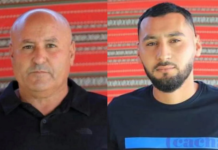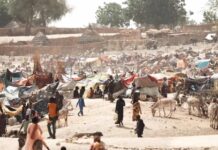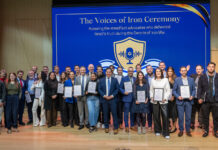It’s hard to believe that this week will have been a decade since Mohamed Bouazizi, a Tunisian fruit vendor, set himself ablaze on Jan. 4, 2011, setting off what has come to be known as the “Arab Spring,” and unleashing several decades of frustration with the Middle East’s entrenched autocratic leaders throughout the region.
For a brief period during that time, the hopeful eyes of the world were watching with aspirations that this might lead to a more open and democratic Middle East, or at least one in which the most entrenched, tyrannical leaders would be overthrown and basic human rights would be established.
It is time to ask: How did it all work out?
The most positive outcome came from Tunisia, where it all began. Zine El Abidine Ben Ali, the extremely corrupt president of Tunisia, fled to Riyadh, Saudi Arabia. In terms of human rights, the Tunisian revolution, which was ignited by Mr. Bouazizi’s self-immolation, has left his country somewhat better off.
However, since then, there has been a great deal of slippage in the realm of human rights. Amnesty International reports: “At least 78 trials, which concerned grave human-rights violations, began before these chambers during the year. Families of people who died at the hands of the police in recent years continued to await justice. There were reports of torture and other ill-treatment. Steps were taken to advance a bill to end discrimination against women with regard to inheritance but stalled. A new complaints mechanism for women victims of violence received tens of thousands of submissions. Bloggers and social media users were prosecuted for the peaceful expression of their views online. Authorities used excessive and occasionally unnecessary force, as well as prosecutions, against peaceful protesters. Refugees and asylum-seekers were detained for irregular entry into Tunisia. Dozens of lesbian, gay, bisexual, transgender and intersex (LGBTI) people were arrested and imprisoned for consensual same-sex sexual relations. Death sentences were handed down; there were no executions.”
And, as we shall soon see, that was among the best outcomes of the Arab Spring.
Inspired by the events in Tunisia, an Egyptian man set himself on fire on Jan. 17, 2011. By the next week, thousands of idealistic, young activists took to Tahrir Square in Egypt. The initial demonstrations were organized by youth groups and soon grew by the thousands in popularity. By Jan. 25, millions gathered in Tahrir Square, as well as across Egypt, demanding that President Hosni Mubarak step down. Social media helped swell the momentum. The demonstrators called for Mubarak to immediately step down. As the demonstrations grew in ranks, Mubarak became increasingly more and more violent. The Central Security Forces were called out and unleashed extreme brutality, at times riding over demonstrators on horseback. Within 18 days, the goals of the activists were actually achieved, and Mubarak stepped down on Feb. 11.
However, power was immediately handed over to the military. And the military did not implement any economic, political or human-rights reforms that many of the protesters had been seeking. Therefore, street protests continued and the military cracked down violently, killing scores of people arbitrarily. The news quickly spread through Facebook, Twitter and other social-media platforms.
Under pressure, the military promised to hold free and fair elections, yet there was a lack of genuine political parties. The Muslim Brotherhood, on the other hand, had developed a well-entrenched, formidable network of supporters.
In June of 2012, Mohamad Morsi of the Muslim Brotherhood was elected. The Brotherhood failed tremendously to deliver any human rights or political or economic reforms. Many of the original young, idealistic demonstrators felt profoundly betrayed. Morsi grabbed more and more legislative powers for himself. Egypt’s military moved in and removed Morsi from office just one year after he assumed power. The military then moved to crush pro-Morsi supporters, killing nearly 1,000 in a single day. The level of violence shocked many into submission. The head of Egypt’s military, Abdel Fattah el-Sisi, took control and promised that the military would have democratic elections, but it was el-Sisi that held the reigns and kept control.
And he has remained in control until this day.
Human rights in Egypt have remained abysmal. There is absolutely no freedom of association or of the press, and minimal freedom of religion. Protesters and dissidents are tortured and arbitrarily imprisoned. Conditions in detention centers remain dire. The role of the military has been enhanced. Women face perpetual discrimination. Gay individuals are imprisoned and tortured. Many churches have been shuttered, and approval has not been given by the government to reopen them.
Hussein Aboubakr Mansour, who took part in the demonstration at Tahrir Square, said: “Our hopes were dashed. Now, there is just more repression, but the sad thing is that most people are resigned to the repression because they see what the government can do, and they are scared.”
In Syria, most of the citizens watched what happened in Tunisia with awe. It had taken only 28 days and minimal bloodshed to overthrow an entrenched regime. The Syrian regime of President Bashar Assad is particularly brutal and repressive. It took a few weeks, but the hopes of an Arab Spring eventually came to Syria. It began with 15 young teenagers who wrote on a wall, “Your time has come, doctor,” referring to Assad, an ophthalmologist by trade.
These young people were hunted down, detained, beaten and tortured. One of them, Hamza al-Khatib, was slaughtered while in prison. At one point during the uprising, the Syrian government sent cans of what looked like dog food to the homes of parents whose children had been protesting and arrested, with the message, “This is your child’s remains.”
During the uprising, an estimated 215,000 Syrians have been imprisoned. Today, 11.5 percent of the Syrian population—more than 12 million people—have been killed or injured since March of 2011—500,000 of them during the Arab Spring uprisings alone, and the rest in the ensuing war. Now, there are more than 1.9 million displaced Syrians. The international community has been of little help. In October of 2011, Russia and China vetoed U.N. Security Council resolutions aimed at pressuring Assad.
Today, Syria is a failed state with Turkey occupying parts of it, Russia occupying others and Iran, an ally of Assad, has been in Syria since the early days of the uprising, giving the government logistical, financial and technical support. Soldiers in Iran’s Islamic Revolutionary Guard Corps and Hezbollah fighters have been in Syria since 2011, giving the forces of Assad military training and support, as well as intelligence.
The Syrian Free Army—the Kurdish forces who valiantly fought alongside American forces in the war against ISIS—have been all but abandoned by the United States. There had been approximately 2,000 U.S. troops, but now there are just a few hundred protecting not our Kurdish allies but the oil fields.
In Libya, massive protests against the regime of Moammar Gaddafi broke out in February of 2011. The protesters quickly took up arms. When they appeared on the verge of defeat, U.S. and NATO forces joined in with the rebel forces. However, Gaddafi clung to power for several months until August, when rebel forces took control of Tripoli. He was killed in October of 2011.
Since the Arab Spring, Libya has gradually descended into chaos, and in 2015, it has divided into two governments—one in the east and one in the west. The eastern government is under the command of Khalifa Haftar, and the western one is the U.N.-backed Government of the National Accord.
The situation in Libya has descended into chaos. It truly fits the description of the Hobbesian war of man against man. Human rights in Libya? Even the use of that phrase is comical when used in the same sentence as Libya. Things are so abysmal in the field of human rights that the United Nations has ordered an investigation into their human-rights abuses.
All told, the Arab Spring—initially so full of promise and ripe with hope from so many young idealistic people of the Middle East—has brought the region as a whole into a long, frigid and decaying winter of disappointment.
Sarah N. Stern is founder and president of the Endowment for Middle East Truth (EMET), a pro-Israel and pro-American think tank and policy institute in Washington, D.C.


























